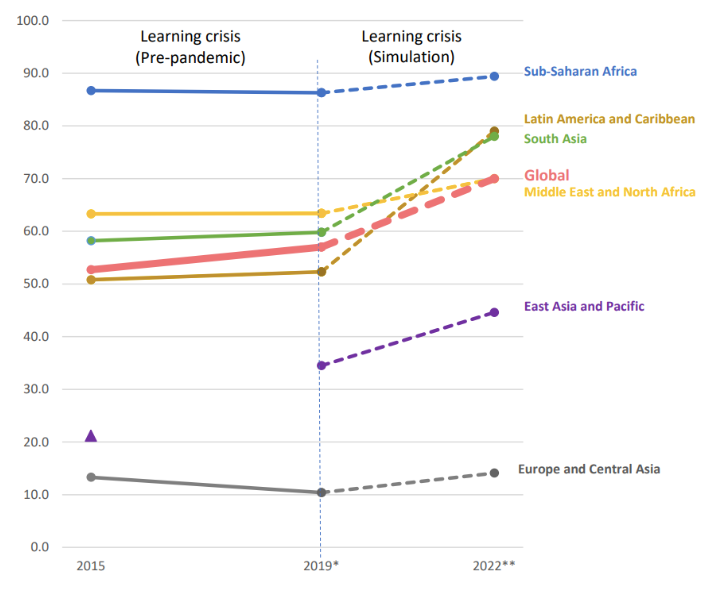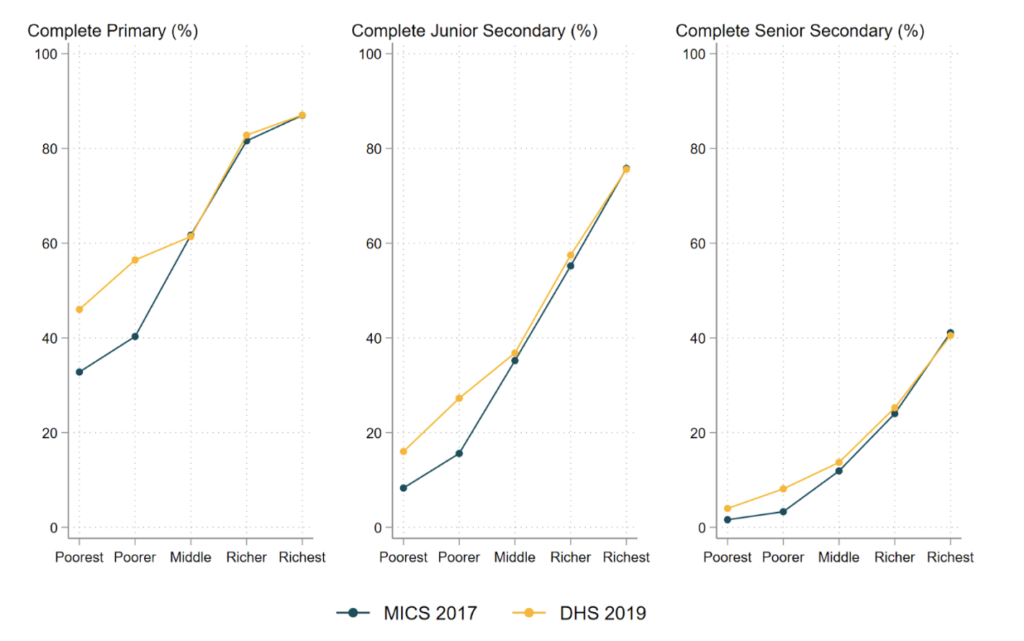We are gearing up for the Transforming Education Summit at the United Nations. In light of the news that The Pandemic Erased Two Decades of Progress in Math and Reading in the United States, and gloomy predictions about Global Learning Poverty from a few months back, the need for transformation feels dire. This month we wanted to share three reasons why we are optimistic that transformation can happen.

First, we take heart in both incremental and more radical progress being made by education systems to be more inclusive.
A new review by Human Rights Watch of over 100 official education laws, policies, and measures to protect or hinder access to education for pregnant girls and mothers across the African Union found that 3 of the four countries with “discriminatory measures that banned pregnant or parenting students from continuing their education” had revoked those bans by August 2022. Although Many Young Mothers [still] Face Education Barriers, the incremental progress is promising. (And commendable for the many advocates in Sierra Leone, Tanzania, and Togo, who worked hard to make this happen!)
Sierra Leone reversed its discriminatory policy as part of a broader Radical Inclusion Policy, which “emphasizes the inclusion of historically marginalised groups: pregnant girls and parent learners, children with disabilities, children from rural and underserved areas, and children from low-income families.” A recent report from the Center for Global Development finds that Sierra Leone’s fee-free and other Radical Inclusion measures have led to a progressive shift in completion rates at every level of education. (The same report underscores how adjustments to the nation’s examination system could take the country even farther.)

Second, we are inspired by parents, communities, and education leaders, who continue to show extraordinary dedication to education.
In Afghanistan, girls and families continue to study in secret schools, defying the Taliban.
A study in Peru showed that simple, remote coaching to parents over the summer improved young children’s math outcomes by 0.12 standard deviations. Those learning gains came from higher parental involvement in child skill development.
Education leaders from across the globe reflect on how leaders can transform education systems through a new book from Teach for All on What Leadership Do We Need Now, and a new video series from Global School Leaders called In the Principal’s Office.
Third, we are invigorated by the idea that not only can education be transformed, but also transformative.
We were a few months late to seeing this research out of Pakistan, but it is interesting enough that it is worth covering now. The authors conducted a randomized control trial in collaboration with the Progressive Education Network (PEN) that involved a basic treatment of showing teachers the movie Bol, which looks at the issue of women’s rights in contemporary Pakistan, followed by an hour-long self-reflection workshop of the gender themes from the movie. The study also included an augmented treatment, where teachers also went through a gender studies curriculum for a semester which they later taught in their class for four months. Researchers did a cross-randomization of teachers to form mixed-sex or same-sex study groups.
Excitingly, the study found that both treatments shifted teacher’s gender attitudes. The movie and reflection alone “increased support for more equitable gender rights by approximately 0.15 standard deviations, with the effect compounding to 0.25 standard deviations when combined with the curriculum treatment.” Those attitudes translated into practice — where teachers from the treatment were more likely to have petitioned parliament to repeal discriminatory laws.
Even more excitingly, the impact on teachers trickled down to students. The teachers who had seen the film but had not taught the gender studies curriculum “had students who were more supportive of gender rights by about 0.10 standard deviations…The effects more than double in size to 0.25 standard deviations for students in the joint narrative curriculum treatment. The students in this group also showed improved mathematics test scores by 0.1 standard deviations, with the gender gap in math virtually disappearing between boys and girls.”
The cross-randomization of mixed and same-sex study groups found that mixed-sex study groups improved math schores and same-sex groups did not. The study therefore suggests that desegrataion within schools could help to narrow gender gaps in education outcomes.
Want to go out and inspire others to transform education?
Check out The Science of What Makes People Care for five principles for more effective communications.
We look forward to seeing many of you in New York City next week, and for those who cannot make it, we’ll provide our take on the week in the next Puggle.
